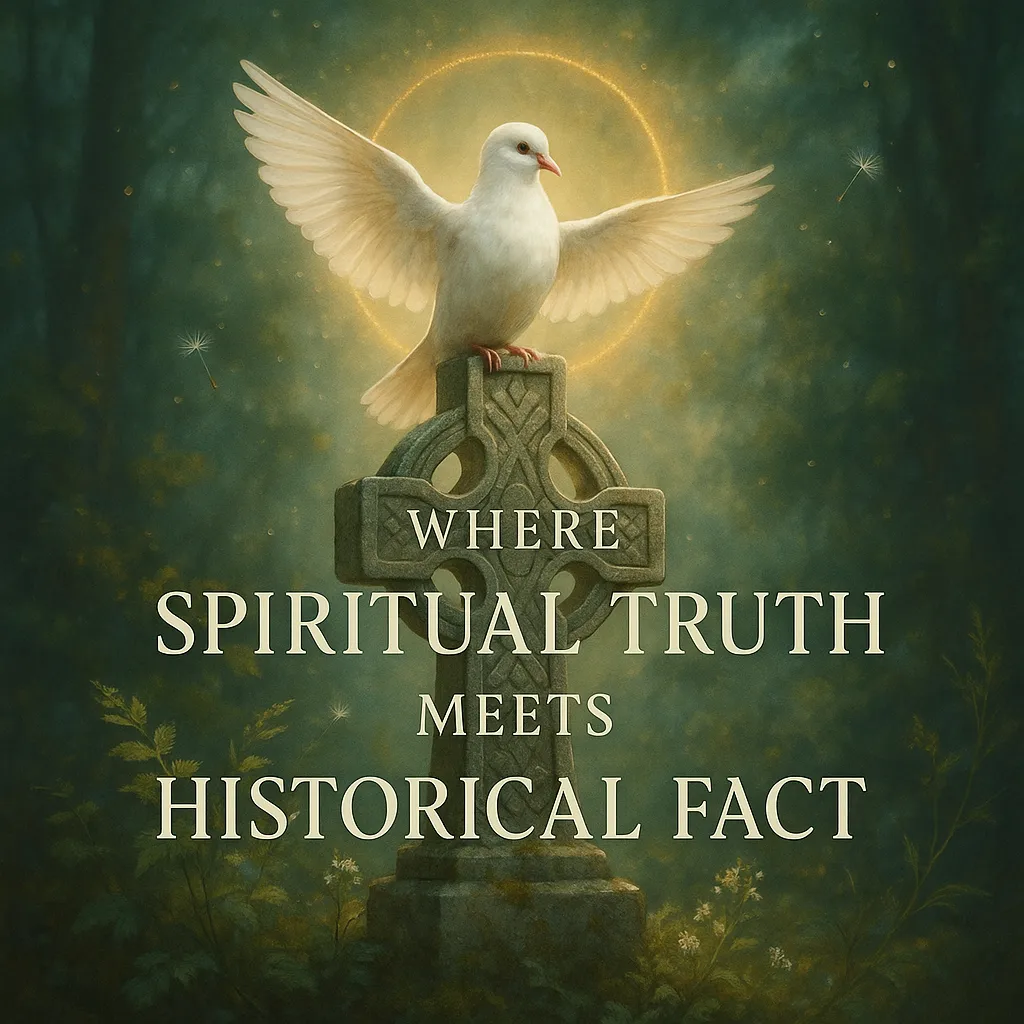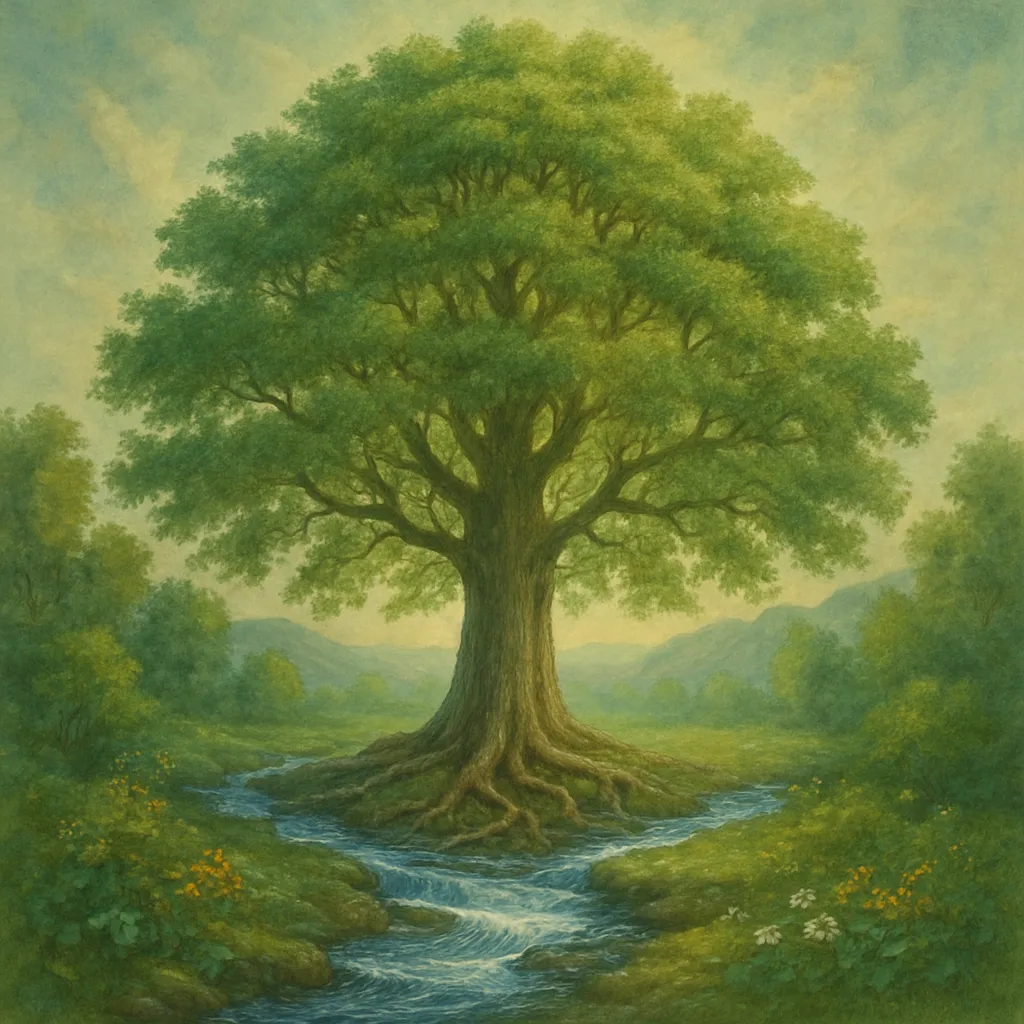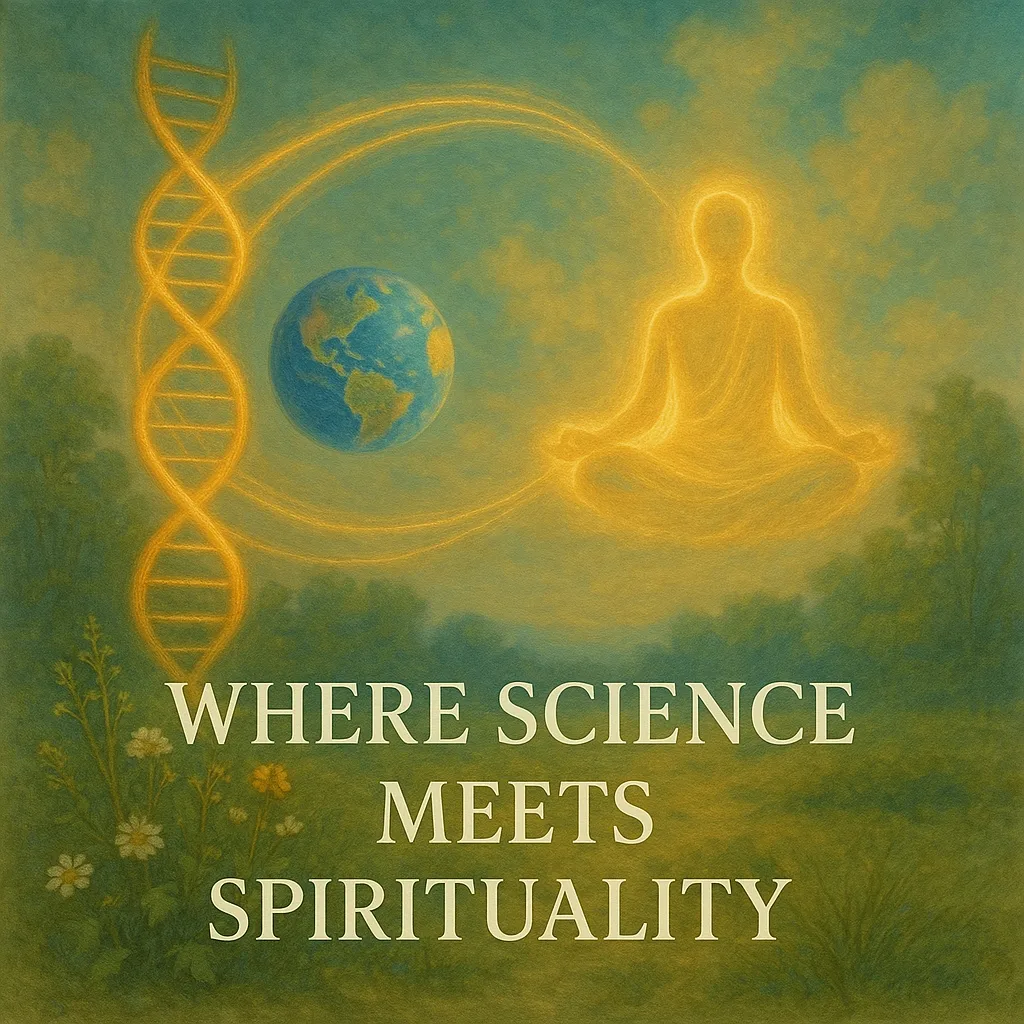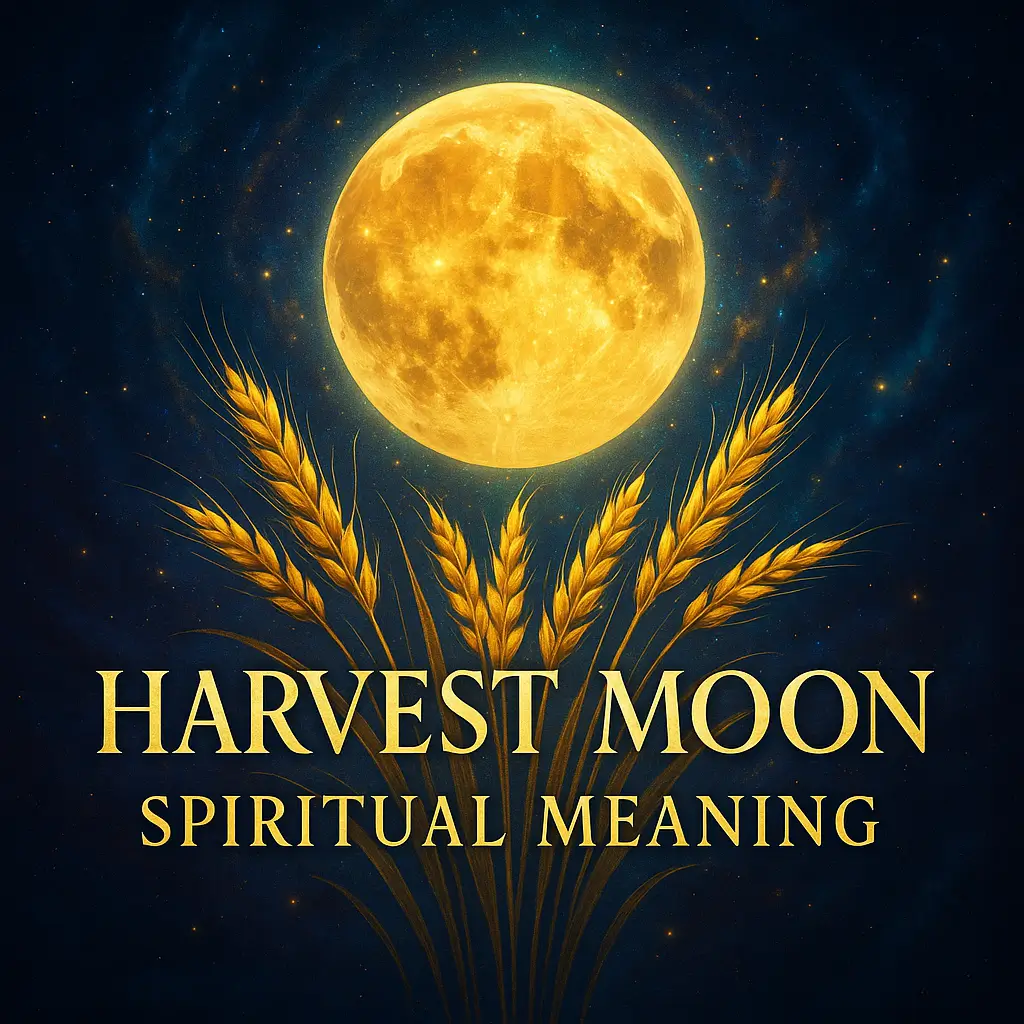In the quiet spaces between what we know and what we feel lies a profound question that has shaped humanity’s search for meaning: What matters more—the spiritual truths that resonate in our souls or the historical facts documented in our books? As you’ve walked your own spiritual path, perhaps you’ve felt this gentle tension—between the mystical experiences that transform your inner landscape and the concrete events that shape our collective story. This dance between the ethereal and tangible touches every spiritual tradition, from ancient wisdom to modern practice, inviting us into a deeper understanding of both the seen and unseen worlds.
Today, we’ll explore this sacred intersection where spiritual insight meets historical record, discovering how these seemingly opposite approaches to truth can actually complement and enrich one another. Whether you’re seeking to deepen your spiritual practice or reconcile faith with fact, this journey offers wisdom for navigating life’s most profound questions.
Table of Contents
- 1 Key Takeaways
- 2 The Nature of Spiritual Truth
- 3 The Foundation of Historical Facts
- 4 Where Spiritual and Historical Traditions Intersect
- 5 Symbolic Meaning Across Traditions
- 6 Divine Revelation vs. Human Reason
- 7 Cultural Context and Universal Meaning
- 8 Practical Applications: Living Between Two Worlds
- 9 Common Misconceptions and Harmonization
- 10 Modern Research: Where Science Meets Spirituality
- 11 Final Reflections: Embracing the Mystery
- 12 FAQ
- 12.1 What is the difference between spiritual truth and historical facts?
- 12.2 How can I reconcile spiritual experiences with scientific understanding?
- 12.3 Do all spiritual traditions distinguish between spiritual and historical truths?
- 12.4 How can symbols help bridge spiritual truth and historical facts?
- 13 Sources
Key Takeaways
- Complementary perspectives rather than contradictions: spiritual truth and historical facts offer different angles on the same reality
- Symbols like the Tree of Life transcend cultural boundaries, revealing universal truths across diverse traditions
- Balanced spirituality integrates both faithful questioning and critical thinking
- Modern research increasingly validates traditional spiritual practices, creating bridges between ancient wisdom and contemporary understanding
- Personal integration comes through practices that honor both historical context and direct spiritual experience
The Nature of Spiritual Truth
What Defines Spiritual Truth?
Spiritual truth emerges from the realm of inner knowing, divine revelation, and transcendent experience. Unlike empirical facts, it speaks to the meaning behind existence rather than just its mechanics. These truths often arrive through meditation, prayer, mystical experiences, or deep intuition—what many traditions call “direct knowing.” While they may not be measurable by scientific instruments, they transform our perception of reality and provide frameworks for understanding our place in the cosmos.

Characteristics of Spiritual Wisdom
Spiritual wisdom carries distinctive qualities that set it apart from other forms of knowledge:
- Transcends time and space: Spiritual insights often feel timeless and universal
- Reveals meaning and purpose: Addresses the “why” behind existence
- Transforms the seeker: Changes not just what we know but who we are
- Speaks in symbolic language: Communicates through metaphor, archetype, and ritual
- Connects to something greater: Points to unity beyond individual experience
How Spiritual Truth is Recognized
Across traditions, spiritual truth is recognized not through external verification but through its resonance, coherence with tradition, and transformative impact. The Quaker concept of “Inner Light” suggests divine guidance accessible without intermediary, while Buddhist traditions speak of “direct seeing” beyond conceptual understanding. What’s your experience—how do you recognize when something rings true in your spirit?
The Foundation of Historical Facts
The Nature of Historical Evidence
Historical facts rest on evidence—artifacts, documents, eyewitness accounts, and physical remains that can be studied, dated, and verified. Unlike spiritual truth, historical facts aim for objectivity, seeking to establish what actually happened in the physical world. This approach values verification, cross-reference, and the critical examination of sources.
Why Historical Context Matters
Understanding the historical setting of spiritual teachings provides crucial context—revealing how divine messages intersected with particular times, cultures, and circumstances. For instance, knowing the social conditions of ancient India illuminates Buddha’s teachings on suffering, while understanding Roman occupation enriches our grasp of Jesus’s message about the Kingdom of God.
The Limitations of Historical Analysis
While powerful, historical methods have boundaries. They cannot measure the divine or evaluate transcendent experiences. A historical approach might confirm that thousands gathered to hear the Sermon on the Mount, but cannot measure how those words transformed hearts. We must recognize both the value and limits of this approach when exploring spiritual matters.
Where Spiritual and Historical Traditions Intersect
Abrahamic Faiths: Revelation in History
In Judaism, Christianity, and Islam, divine truth manifests within historical events. The Exodus wasn’t merely symbolic but a historical liberation infused with spiritual significance. Christianity centers on the historical person of Jesus while affirming his divine nature. As noted in the Gospel of John (1:14), “The Word became flesh and dwelt among us”—a profound union of eternal truth with temporal reality.
Eastern Perspectives: Timeless Wisdom in Cultural Context
Buddhist and Hindu traditions emphasize eternal dharma (truth) expressed through specific cultural forms. The Buddha’s enlightenment represents both a historical event and a timeless possibility for all beings. The Bhagavad Gita places cosmic wisdom within the historical framework of ancient Indian warfare, suggesting that ultimate truth manifests within particular circumstances.
Indigenous Wisdom: Living History and Spiritual Practice
For many indigenous traditions, history isn’t separate from spirituality but woven together through sacred storytelling, land connection, and ancestral wisdom. Creation stories simultaneously explain cosmic origins while providing practical guidance for community life, demonstrating how spiritual truth and cultural history can be integrated.
Symbolic Meaning Across Traditions
Universal Symbols That Bridge Worlds
Certain symbols appear across diverse traditions, suggesting archetypal truths that transcend historical boundaries:
- The Tree of Life: Found in Norse mythology, Kabbalah, and Mesoamerican traditions, representing connection between realms
- Sacred Waters: From Christian baptism to Hindu sacred rivers, symbolizing purification and spiritual rebirth
- Light and Darkness: Universal metaphors for knowledge and ignorance, divine presence and absence

How Symbols Transform Historical Events
Symbols transform concrete events into carriers of eternal meaning. The cross in Christianity transforms an ancient method of execution into a symbol of divine love and redemption. The Buddhist lotus flower represents enlightenment emerging from suffering’s mud. These symbols help bridge the temporal and eternal, allowing historical moments to carry spiritual significance.
Creating Personal Symbolic Understanding
How might you recognize the symbols speaking to your own journey? Consider keeping a symbol journal, noting images that repeatedly appear in your dreams, meditation, or daily life. Which spiritual symbols resonate most deeply with your experience? This practice helps build a bridge between universal archetypes and your personal spiritual path.
Divine Revelation vs. Human Reason
Sources of Knowledge in Spiritual Traditions
Spiritual traditions recognize multiple ways of knowing. The Christian tradition values revelation through scripture and the Holy Spirit’s guidance. As stated in John 16:13, “When the Spirit of truth comes, he will guide you into all truth.” Meanwhile, Jainism emphasizes anekāntavāda (non-absolutism)—recognizing multiple perspectives as paths to understanding deeper reality.
The Role of Critical Thinking in Spiritual Growth
Far from enemies, critical thinking and spiritual intuition can work as partners. Buddhist teachings encourage questioning through the Kalama Sutra’s invitation to test teachings against personal experience. The medieval Christian mystic Hildegard of Bingen combined visionary experience with rational investigation of herbs and healing. How might you balance these complementary approaches in your own practice?
Finding Balance Between Faith and Inquiry
Rather than choosing between blind faith and cynical doubt, mature spirituality involves “faithful questioning”—holding space for mystery while engaging in honest inquiry. This balanced approach honors both the heart’s knowing and the mind’s discernment, creating space for a more integrated understanding.
Cultural Context and Universal Meaning
How Cultural Settings Shape Spiritual Expression
Every spiritual truth manifests through specific cultural forms—language, ritual, art, and community structures. Roman spirituality expressed cosmic harmony through public festivals maintaining Pax Deorum (peace with the gods). Zen Buddhism’s emphasis on direct experience reflects Japanese aesthetic minimalism. Recognizing these cultural influences helps us distinguish between essential spiritual truths and their particular expressions.
Extracting Universal Wisdom from Cultural Practices
Behind diverse cultural forms often lie universal spiritual insights. Meditation practices appear across traditions—from Christian contemplative prayer to Buddhist mindfulness to Sufi remembrance—each culturally distinct yet pointing toward similar transformative experiences. By looking beyond form to essence, we can recognize universal wisdom in varied expressions.

Appreciating Diversity While Seeking Unity
The world’s spiritual traditions offer a magnificent tapestry of approaches to ultimate reality. Rather than flattening these differences or exaggerating them, we can appreciate both unique cultural expressions and the universal human quest they represent. This balanced perspective allows us to learn from traditions not our own while honoring their distinctive contexts.
Practical Applications: Living Between Two Worlds
Integrative Spiritual Practices
Practices that honor both historical context and spiritual meaning help integrate these complementary truths:
- Sacred Reading: Approaching texts with both historical awareness and spiritual receptivity
- Pilgrimages: Visiting actual historical sites with reverence and openness to spiritual presence
- Ritual Adaptation: Maintaining traditional forms while finding fresh meaning for contemporary life
Meditation: Historical Understanding With Spiritual Presence
Consider this reflective practice: Choose a spiritual teaching or symbol important to you. First, research its historical context and development. Then, in meditation, open yourself to its deeper significance beyond historical facts. Notice how historical understanding and spiritual receptivity enhance each other, creating a richer relationship with the teaching.
Community Dialogue: Bridging Different Ways of Knowing
Create space for conversations that honor multiple approaches to truth. Host a small gathering where participants share both scholarly knowledge about their tradition and personal spiritual experiences. This practice builds bridges between academic understanding and lived spirituality, enriching both approaches.
Common Misconceptions and Harmonization
“Spiritual Truth Contradicts Historical Facts”
One common misconception suggests spiritual truth and historical facts must conflict. However, they often address different dimensions of reality rather than competing accounts of the same dimension. Early Christian apologists like Justin Martyr argued that Christ’s resurrection held both historical significance and profound spiritual meaning—suggesting these approaches can complement rather than contradict each other.
“Only One Approach Is Valid”
Another misconception claims either spiritual insight or historical analysis must be prioritized exclusively. Yet many of history’s greatest spiritual teachers integrated both. Thomas Aquinas brought together faith and reason, while Buddhist scholar-practitioners combine textual study with meditation. This integration creates a more complete understanding than either approach alone.
Finding Harmony Through Complementary Perspectives
Rather than forcing an either/or choice, we might consider how spiritual truth and historical facts offer complementary perspectives—like describing a mountain from different angles. Historical analysis provides context and grounding, while spiritual insight reveals meaning and purpose. Together, they create a more complete picture than either alone could provide.
Modern Research: Where Science Meets Spirituality
Psychological Benefits of Spiritual Practices
Contemporary research increasingly validates traditional spiritual practices. Studies show meditation reduces stress and anxiety while improving focus and emotional regulation. A 14-year Canadian study found monthly religious attendance associated with 22% lower depression risk. These findings bridge ancient wisdom and modern scientific understanding, validating spiritual approaches through empirical methods.
Neurological Evidence for Transcendent Experiences
Brain imaging studies reveal how meditation and prayer affect neural pathways, producing measurable changes in brain activity. Research at the University of Pennsylvania shows distinctive patterns in the brains of experienced meditators during transcendent states. These findings neither prove nor disprove spiritual claims but demonstrate measurable correlates to subjective spiritual experiences.
Interdisciplinary Approaches to Understanding Reality
Emerging fields like consciousness studies bring together neuroscientists, philosophers, and contemplatives to explore consciousness from multiple perspectives. The Mind & Life Institute facilitates dialogues between Buddhist practitioners and Western scientists, creating space for complementary approaches to understanding reality. These collaborations suggest a more integrated future where spiritual and scientific inquiries inform rather than oppose each other.

Final Reflections: Embracing the Mystery
The Dance of Knowing and Not-Knowing
Perhaps the wisest approach embraces both the clarity of historical knowledge and the mystery of spiritual insight. As the Tao Te Ching suggests, “Those who know do not speak. Those who speak do not know.” This paradoxical wisdom reminds us that some truths can be articulated while others must be experienced directly. Can you recall moments in your life when you’ve encountered truth beyond words?
Personal Integration: Your Unique Path
Your spiritual journey may draw from both historical understanding and direct experience in uniquely personal ways. Consider journaling about how these approaches have shaped your path: When has historical context deepened your spiritual understanding? When has intuitive knowing transcended intellectual knowledge? This reflection helps integrate these complementary approaches into your unique spiritual journey.
Invitation to Spacious Understanding
Rather than choosing between spiritual truth and historical fact, perhaps wisdom lies in holding both with an open hand. This spacious approach honors both the scholar’s careful research and the mystic’s direct experience, creating room for a more complete understanding. In this integrated perspective, we find not conflict but complementarity—different facets of the magnificent jewel of reality.
FAQ
What is the difference between spiritual truth and historical facts?
Spiritual truth concerns inner meaning, purpose, and transcendent reality that resonates with the soul, while historical facts deal with verifiable events and evidence. They represent complementary approaches to understanding reality—one addressing the “why” of existence, the other the “what” and “when.”
How can I reconcile spiritual experiences with scientific understanding?
Approach both as complementary perspectives rather than competing claims. Scientific methods explore measurable aspects of reality while spiritual experiences reveal meaning and purpose. Many contemplative practitioners maintain both rigorous scientific thinking and rich spiritual lives by recognizing the different domains each addresses.
Do all spiritual traditions distinguish between spiritual and historical truths?
Different traditions approach this relationship variously. Abrahamic faiths often emphasize divine revelation manifesting in history, while some Eastern traditions focus more on timeless principles beyond historical specifics. Indigenous spiritualities frequently integrate historical and spiritual understanding through ancestral wisdom and sacred storytelling.
How can symbols help bridge spiritual truth and historical facts?
Symbols function as bridges between tangible history and transcendent meaning. They transform concrete events into carriers of eternal significance. The Christian cross, for instance, transforms a historical method of execution into a symbol of divine love and sacrifice that resonates beyond its original context.



